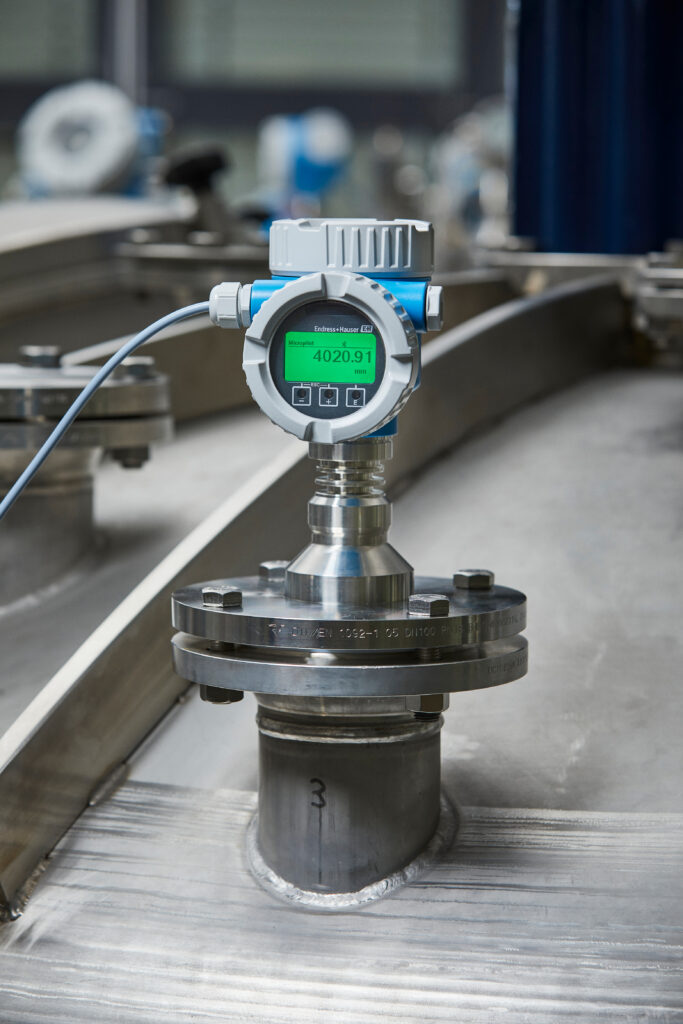
Endress+Hauser 80 GHz radar sensors
By Endress+Hauser
Products Endress+Hauser Micropilot 80 GHz radar sensors sensors Endress+Hauser Micropilot 80 GHz radar sensor
Endress+Hauser Micropilot 80 GHz radar sensor Endress+Hauser has endowed a new generation of Micropilot 80 GHz radar sensors with a range of capabilities and features that make each instrument easy to locate, install, commission and monitor; so as to adapt to each customer’s unique operating conditions. The new Micropilot is simpler, more efficient, and operationally safer in every respect.
This new generation – comprising the Micropilot FMR60B, FMR62B, FMR63B, FMR66B and FMR67B – is designed to meet challenges such as measuring points that are difficult to access or dusty environments. Thanks to the new Micropilot’s compact design, it can be used in confined installation situations. Suitable versions are available for challenging process conditions such as aggressive media or extreme process temperatures.
The exceptional measurement performance of the Micropilot’s new radar chip combined with the smart Heartbeat Technology monitoring function helps to increase productivity and avoid unscheduled downtime.
What’s more, integrated digital assistants (wizards) operated via Endress+Hauser’s SmartBlue app make these level measurement sensors easier to use. Apart from tried-and-tested digital communication protocols such as HART or Profibus, the new generation also offers the choice of innovative communication technologies such as Ethernet-APL.
Commissioning and operation are straightforward and intuitive. Users are guided through the process by integrated assistants (wizards), thus preventing errors and enabling the devices to be operated without much training. Parameter configuration and subsequent proof-testing are also guided. Thanks to a Bluetooth interface, the devices can be conveniently controlled remotely via the SmartBlue app. In conjunction with Heartbeat Technology, processes can thus be monitored continuously, and device verifications performed in less than three minutes while the process is running.
With the HistoROM mobile data memory, measuring point parameters are transferred to the new sensor without error when the electronics are replaced. The device is repaired quickly and smoothly without the need for specialized user knowledge.
Systematic errors, unintentional operating errors and process anomalies all pose risks to plant safety. The new Micropilot meets all safety requirements. It has been developed in accordance with IEC 61508 using Endress+Hauser’s 20 years of SIL expertise and can therefore be used in SIL2 or SIL3 applications, for example, with homogeneous redundancy.
Furthermore, operating sequences guide the user step by step through commissioning, parameter configuration or SIL proof testing, preventing systematic errors and increasing safety. With the Bluetooth interface, function checks or changes to settings can be performed remotely from outside the danger zone using the SmartBlue app. For those who choose Ethernet-APL to network their instrument, the device can be monitored and operated for the first time via an integrated web server. And for technical staff on site, the new Micropilot’s display changes from green to red in the event of an error, providing a quick status overview that helps ensures safety.
Another function designed to eliminate systematic errors is the automatically generated checksum (CRC), generated from all the safety-related parameters and noted in the test report. Changes to an individual parameter can be identified from the checksum, significantly speeding up inspections.
The exceptional measurement performance of the new radar chip increases the productivity of industrial processes. In addition to measurement performance, the availability of Heartbeat Technology on board provides reliable diagnostic and monitoring data for early detection of anomalies such as foam or buildup. Device verifications can be performed in less than three minutes without having to remove the device and without interrupting the process. For the first time, the patented radar accuracy index (RAI) combined with Heartbeat Verification enables traceable verification according to DIN ISO 9001, resulting in a considerable reduction in the effort and costs associated with calibration and documentation and can extend calibration cycles significantly.
Print this page